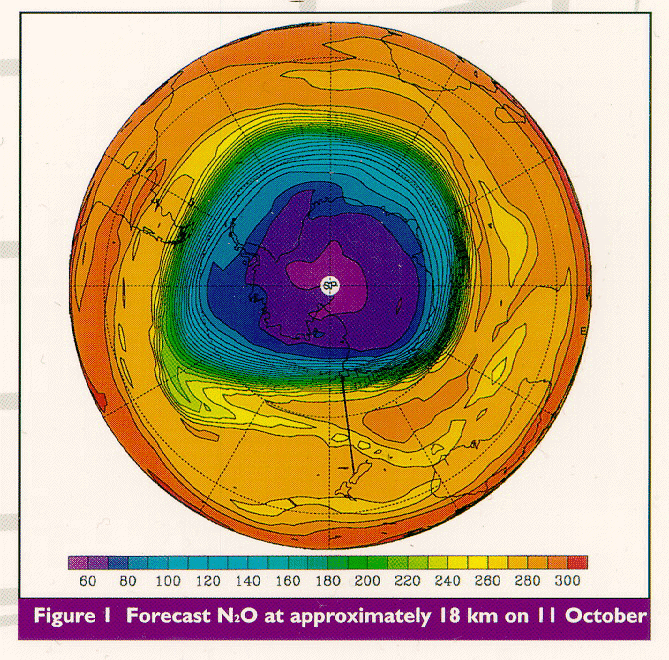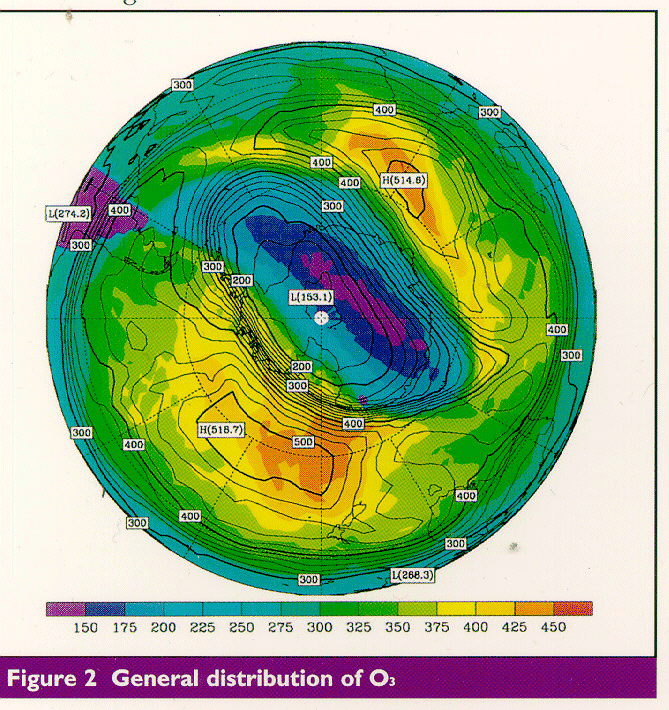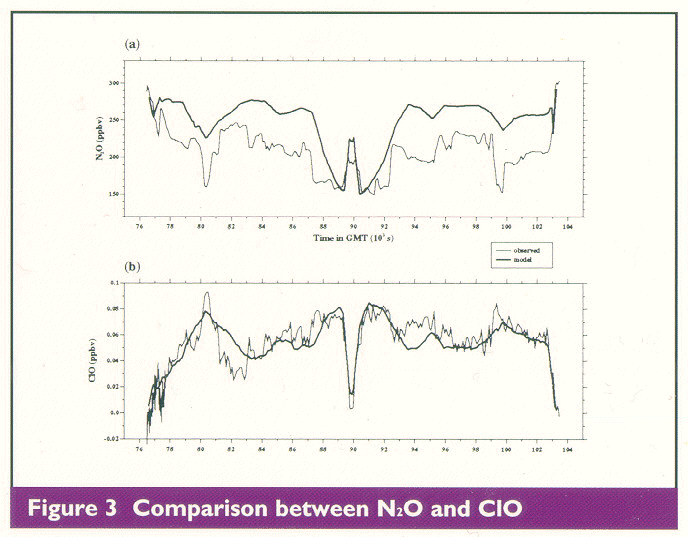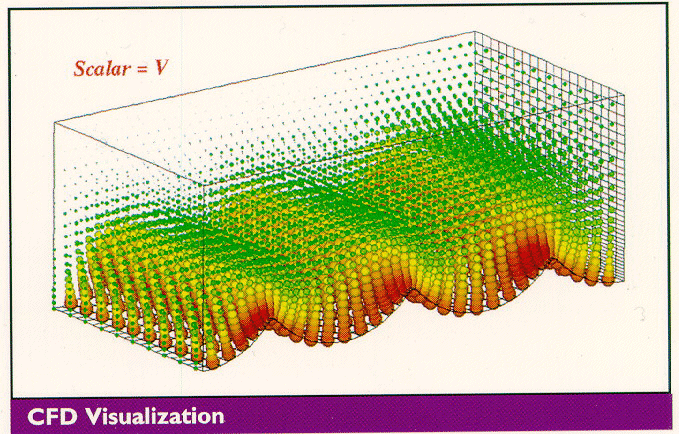


NOTE: many of the urls referenced in this newsletter are no longer active.
This is the first edition of our new newsletter ATLAS which provides succinct and mainly non-technical information about the activities, services and facilities supported by the Computing and Information Systems Department (CISD) of the Central Laboratory of the Research Councils (CLRC). An important feature of the newsletter is that the short articles in the printed newsletter will be supplemented by references to more detailed background and technical information on the World Wide Web (WWW). We hope in this way to be able to convey the essential information without consuming too many trees and at the same time to provide readers with electronic access to far more information than could ever be covered sensibly in just a printed newsletter.
ATLAS will be published 6 times a year and will be put up on our WWW server at http://www.cis.rl.ac.uk/publications/ATLAS/ the activities supported by CISD include the provision and development of computing services, work on visualization, algorithms, parallel computing and scientific support, and a range of systems engineering and advanced communications projects. CISD participates in many research and development activities funded by the European Union (EU) and other sources.
The first edition of ATLAS samples this range and contains reports on one of the major environmental projects that uses our high performance computing facilities, exploratory use of virtual reality techniques, an EU project on desktop videoconferencing between the UK and a hospital in Madrid, and the recently finalised design of Fortran 95. We hope you will find the newsletter helpful and that if you have not already done so, will complete the enclosed positive response card.
Research into understanding the ozone holes relies on both observation and computer modelling and the Cray Y-MP was used recently to help plan the aircraft based observations in the ASHOE (Airborne Southern Hemisphere Ozone Experiment) and SESAME (Second European Stratospheric Arctic and Middle-latitude Experiment) field campaigns. A general circulation model was integrated at high resolution to produce a 10-day meteorological forecast. These forecast dynamical fields were then used to produce a medium-range chemical forecast of the stratosphere.

During the ASHOE campaign, which took place from March to October 1994, the NASA ER-2 high altitude research aircraft made measurements of chemical tracers in the lower stratosphere. During the polar winter, a continental scale weather system, known as the polar vortex, develops over the pole in the stratosphere and persists until late spring. This weather system acts as a containment vessel for the perturbed chemistry that leads to the ozone hole. Recent theory has shown that mechanisms exist for transporting vortical air parcels to more temperate latitudes. One of the campaign objectives was to study air parcels that had been eroded from the polar vortex edge.
Figure 1 shows the forecast distribution of N2O at approximately 18 km on 11 October. The heavy line shows the actual flight path made by the ER-2. It appears that vortical air is being stripped off the polar vortex in the form of filaments, one of which, the forecast predicts, will be sampled by the ER-2 during the flight path shown by the heavy line.
After the campaign had ended, measured meteorological conditions were used to define a higher resolution model and predictions of the chemical concentrations obtained for a more detailed comparison with the experimental data, concentrating on the filamentary structures.


The general distribution of O3 obtained from the predictive runs (Figure 2) and the detailed chemistry from the higher resolution runs agree very well with the measured data. Figure 3 shows the comparison for the relatively inactive species N2O and the active (short lived) species ClO from the flight path of the ER-2. The central trough in the ClO concentration and the peak in NaO line up precisely with the filament of vortical air.
These forecast and high resolution modelling studies represent a significant first in the chemical modelling of the atmosphere and a major step in the precise understanding of the dynamics and chemistry of the ozone hole.
For the full text of this article see http://www.cis.rl.ac.uk/publications/ATLAS/jan96/ozone.html
Fortran 95 is a minor extension of Fortran 90. Its design was finalised in November 1995 and it is now in its final stages of acceptance as a standard. The most significant additions to Fortran 90 are in support of HPF (High Performance Fortran).
John Reid's research interests include Numerical linear algebra, large sparse matrices and Automatic differentiation. He is also secretary of the X39 standards group.
He is responsible for providing a library of subroutines for scientific computing, running courses on numerical analysis, offering an advisory service on numerical methods, and conducting research in mathematical computing. He contributes in all these fields with special emphasis on sparse matrix work.
If you would like to find out more about John Reid look him up at http://www.cis.rl.ac.uk/people/jkr/contact.html
For the full text of this article see http://www.cis.rl.ac.uk/publications/ATLAS/jan96/F95.html
The first project undertaken on RAL's Virtual Reality (VR) Facility, located in the Visual Laboratory of CISD, has been a study of the ability to assemble a major part of one of the detectors on the future Large Hadron Collider (LHC) at CERN. Taking data from the ComputerVision CAD system on which the detector was being designed, components were allowed to move independently and problems of assembly explored. As the final system weighs hundreds of tons and requires millimetre accuracy, this is a challenge for the VR system.
While VR is often a powerful tool for the simulation of a real situation, as with the LHC detector, RAL is also pursuing its use in the more abstract area of data visualization. In collaboration with the Advanced Research Computing Division, the VR system is being used to provide visualization of the complex, non-steady flows that occur on seashores. This involves taking the data produced by Computational Fluid Dynamics codes run on the supercomputers, preparing virtual worlds representing surfaces using the AVS system and finally viewing the results on the VR system.
The VR Facility is currently based on a Silicon Graphics Onyx processor, currently using Reality Engine 2 graphics. A variety of input devices are available, but for shared exploration of a system, a mini-cinema with 3D projection has been created where the real-time output of the VR system can be viewed by about 10 people simultaneously.

For explanations and pictures of the facility please see http://www.cis.rl.ac.uk/services/VR/
For the full text of this article see http://www.cis.rl.ac.uk/publications/ATLAS/jan96/VR.html
The installation of the Superjanet network has made videoconferencing a quite widely used technology within the academic community. Many will also have seen Mbone videconferencing on the Internet. The desktop version of videoconferencing, which is person to person communication with sound and video presented to the user via their desktop computer, has as yet not become generally available. Recently such desktop videoconferencing on PCs between RAL and a hospital in Madrid, the Clinica de Puerta Hierro, was demonstrated by a RACE II project called CHARISMA.
The main thrust of the CHARISMA project has been case handling with multi-media data, that is data including video and audio clips. Since case handling involves passing this multimedia case data quickly between the persons dealing with the case, broadband networking is involved. The development of the ATM (Asynchronous Transfer Mode) networking equipment used in the project has been the responsibility of the UK partners, one of which was the Advanced Communications Unit at RAL. The equipment developed includes a small and cheap ATM switch and the operating system software and interface board necessary to connect a PC to an ATM network. Although this equipment is designed for use in the local area the switch has provision for connection to a wide-area ATM network at the 34Mbps rate. For the trials between RAL and Madrid, CHARISMA switches were connected to the European ATM Pilot Network, the connection in Madrid being direct at 34Mbps and that for RAL going via Superjanet.
Videoconferencing was run successfully between RAL and Madrid for long periods, the connection could even be broken for periods of many minutes and returned to operation immediately the connection was re-established. The demonstration was serious in the sense that the equipment used has a reasonable cost, expensive in PC terms (about workstation costs) but dropping rapidly, and the networking was non-trivial, there being at least seven ATM switches for data to pass between RAL and Madrid. A valuable next step would be to define a user community and conduct a videoconferencing trial.
For the full text of this article see http://www.cis.rl.ac.uk/publications/ATLAS/jan96/video.html
There were no big surprises at the Supercomputing '95 conference. There was probably a heavier emphasis on software than in previous years, partly because of its importance in High Performance Computing (HPC) but also because some hardware companies have opted (or been pushed) out of the hardware market (notably Thinking Machines and BBN). The workstation vendors were well represented, principally Sun and Silicon Graphics, but HP was not far behind with a strong emphasis on its new CONVEX acquisition. CRAY and IBM were joined by the three Japanese vendors who were more upbeat than at previous meetings. Burton Smith's Tera from Seattle has a fairly innovative architecture that uses extensive multithreading to overcome latency problems. The construction costs for the machine are being covered by UNISYS, and they hope to start shipping machines next spring. Although Avalon were still touting their teraflop computer, based on the DEC 21164 microprocessor, it was harder to find anyone taking them too seriously.
Meiko and MasPar were noticeable by their absence. Livermore seem happier with their MEIKO now that the vector nodes are being replaced with the 2-processor Super SPARC nodes. The European Union EUROPORT Project was well represented with an attractive stand, many participants, and a full day workshop. Many US participants were somewhat envious of the relationship between research centres and industry as embodied in EUROPORT 1 and 2.
Although their budgets are ostensibly declining, the major players in Supercomputing meetings continue to be the US Government Laboratories. They had a significant presence within the Research Exhibits. Some of the demonstrations were of very high quality, with a wide range of applications and many impressive graphical displays on platforms ranging from CRAYs and large IBM SP-2s to networks of workstations, sometimes widely distributed.
For further information see http: //www. Supercomp.org/sc95/proceedings
For the full text of this article see http://www.cis.rl.ac.uk/publications/ATLAS/jan96/super.html
I would like to add my welcome to this first edition of ATLAS, which will be published 6 times a year. As Editor of ATLAS it is my responsibility to ensure this new publication meets the needs of its readers. I hope that you will assist me in this both by commenting on its content and submitting articles for publication in future issues.
ATLAS will rely heavily on the World Wide Web (WWW) for distribution of detailed technical information. The printed paper version will contain short articles, the full text will be available through the URL's provided at the end of each item. There will sometimes be a supplement to ATLAS called ATLASES which will only appear on the WWW and will contain up-to-the-minute additional material.
This first issue of ATLAS is being distributed widely, but to be certain of receiving future issues, you must complete and return the enclosed positive response card. We would like to thank those of you who have already returned their cards.
As we go to press, EPSRC, as manager of the Research Councils' national high performance computing programme, is making arrangements to relieve the overloading on the Cray Y-MP service at the Atlas Centre by purchasing a Cray J-90 parallel vector processor for immediate installation in the Atlas Centre at the Rutherford Appleton Laboratory. The J-90 will have to have over twice the aggregate power of the Y-MP, more memory and greater disk capacity. The Y-MP's role in the national programme will end after a suitable overlap period.
The next edition of Atlas will contain more details of this new facility.
Cray User Group Meeting 25 April 1996, Rutherford Appleton Lab, CLRC
Contact: Linda Miles, E-mail: L.Miles@rl.ac.uk